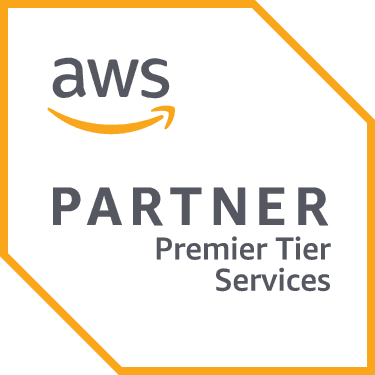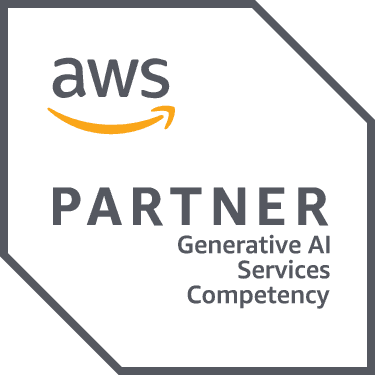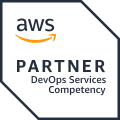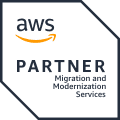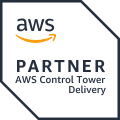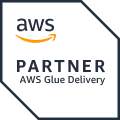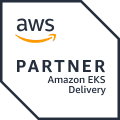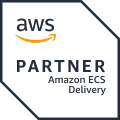
Home
Modernize your application and drive greater business value
Modernize your application and drive greater business value
Digital Velocity
Thu, 21st Aug'25, 5:30 PM - 12:00 AM IST
- Application Modernization
- DevOps Modernization
- Data Modernization
Assess Modernization Viability
Assess your portfolio and cloud readiness to create a migrate to modernize roadmap
Move to Container
Migrate your application with the best fit from the 7R migration strategy
Move to Cloud Native Architecture
Transform your legacy applications with cloud modernization
Migrate to modernize with AWS Specialized Modernization Partner to build Future Ready Enterprise
Work with an AWS X-Spec Modernization Partner to embark on seamless cloud migrations and drive transformative modernization journeys.
WORTH NOTHING
We help build
modern cloud systems
In past few years we have partnered several innovations and modernizations; as we helped our customers take benefit of our competence and innovative thinking.
Learn more0+
Cloud-Powered Innovations
From AI-driven applications to modernized infrastructure, we create scalable, high-performance solutions designed to adapt as your business grows. Our focus is on delivering measurable results that turn technology into a strategic advantage.
0
NPS
With a 9.6 Net Promoter Score, our clients consistently rank us among the best - not just for technical expertise, but for trust, responsiveness, and long-term value.
0+
Cloud Migrations
We specialize in secure, low-disruption migrations of workloads, applications, and databases. Our proven methodologies ensure minimal downtime, zero data loss, and architectures ready for the future.
0+
Cloud Enablers
Our accelerators, governance frameworks, and automation pipelines streamline delivery, reduce risks, and enforce best practices. By embedding compliance and security from day one, we help organizations scale confidently.
In past few years we have partnered several innovations and modernizations; as we helped our customers take benefit of our competence and innovative thinking.
OUR COMPETENCIES
AWS
Competencies
SOLUTIONS & INDUSTRIES
Next-gen Cloud Solutions to Simplify Enterprise Operations
- By Enablers
- By Industry
- By AWS Marketplace
Impacting Businesses in multiple domains
As an AWS Consulting Partner, Axcess.io is trusted in all these sectors.
CASE STUDIES
Our Success Stories
A leading Research & Development company partnered with Axcess.io to transform its software delivery process by implementing a robust CI/CD pipeline on AWS. The aim was to eliminate manual deployment dependencies, enhance developer agility, and improve release velocity through automated, secure, and scalable DevOps practices.
Modernized and automated hubble Connected's software delivery pipeline on AWS. The goal was to establish a robust CI/CD system that would support agile development, reduce manual deployment cycles, and improve release quality and speed. The result was a scalable, secure, and developer-friendly CI/CD framework optimized for rapid delivery.
Transformed Capital Float's software delivery lifecycle by implementing robust CI/CD automation on AWS. The initiative focused on enabling faster releases, reducing manual intervention, and ensuring reliable and secure deployments, ultimately boosting agility and operational efficiency.
Testimonials
What Our Clients Say
Hear directly from our customers about their experiences with Axcess.io. From seamless cloud migrations to innovative AI solutions, our clients share how we've helped accelerate their digital transformation journeys.
"Axcess.io was an amazing choice for migrating our systems to AWS. Their expertise minimized disruptions and accelerated the transition. The team was highly knowledgeable and responsive in resolving post-migration challenges."
Srikar Yekollu, Co-Founder & CTO, Wingman
"Axcess.io helped us architect a secure, scalable foundation that has accelerated our growth. Their cloud expertise has been critical to our success."
Raghu Nandan, CTO, Qube Health
"I work in Enterprise Infrastructure and can confidently say Prakash and his team are very knowledgeable, easy to work with, great communicator and could get a job done in any Tier 1 organization."
Joe Creco, CEO, Fishranger
"We found lifting our Oracle system to aws needed creative thinking and thorough knowledge of the all aspects of aws. Axcess has been working to efficiently get the process off and running and rolling with issues as they came up. The prompt responses and clear communication is a definite plus."
Nick S, IT Head, Thoroughbred Fulfillment
Interesting Reads


